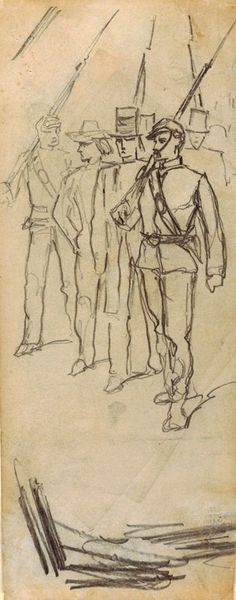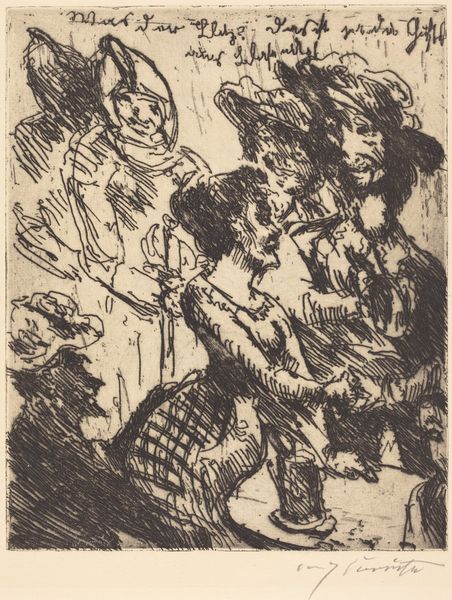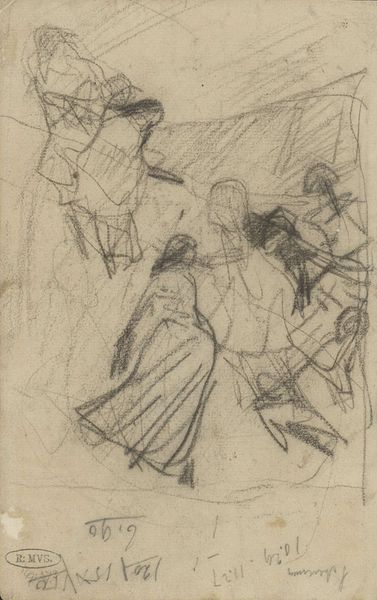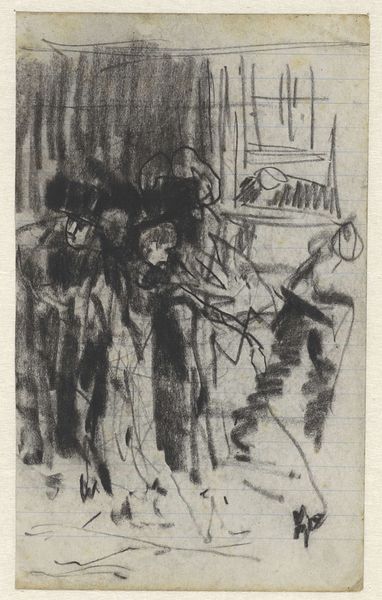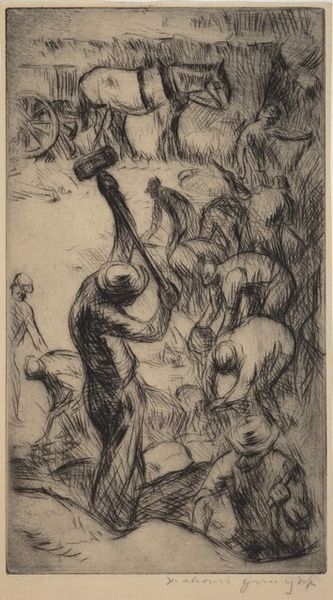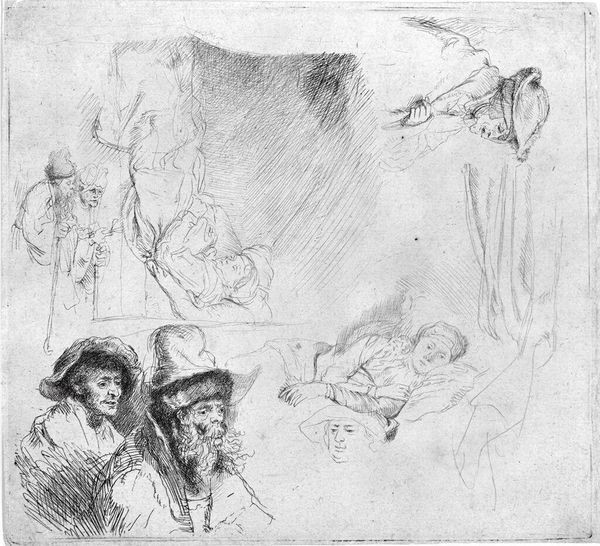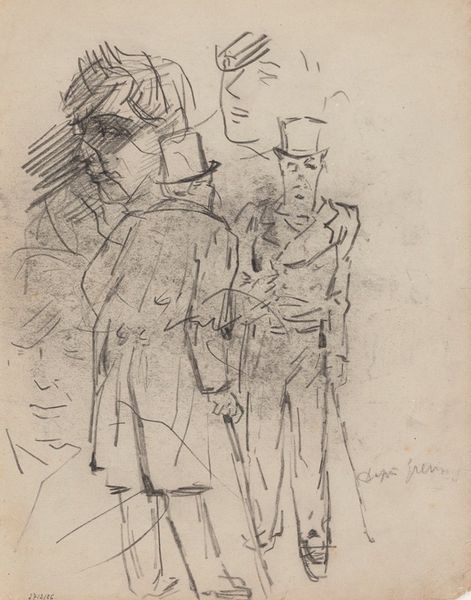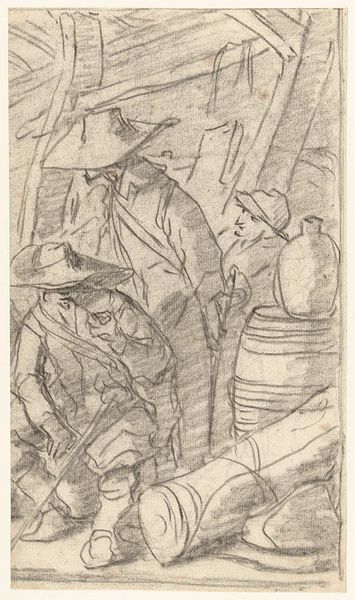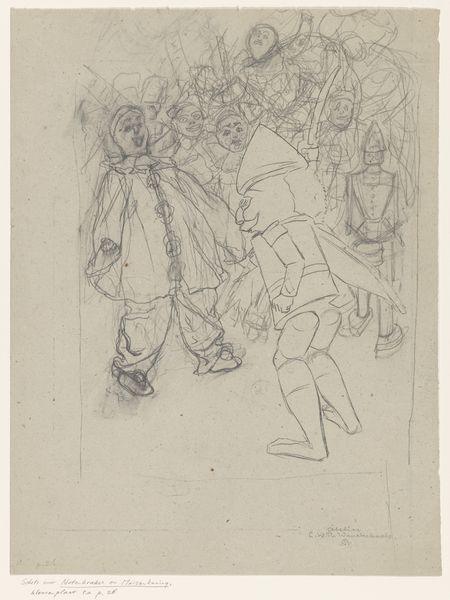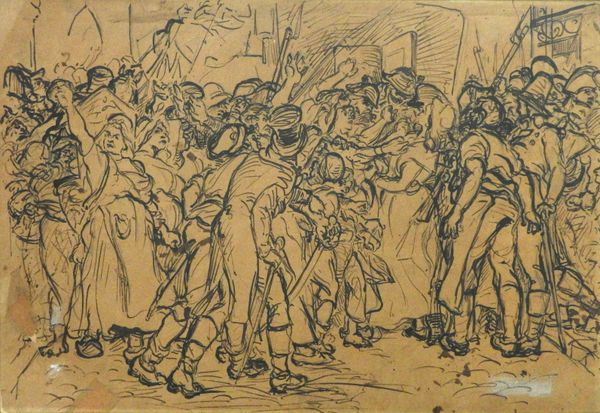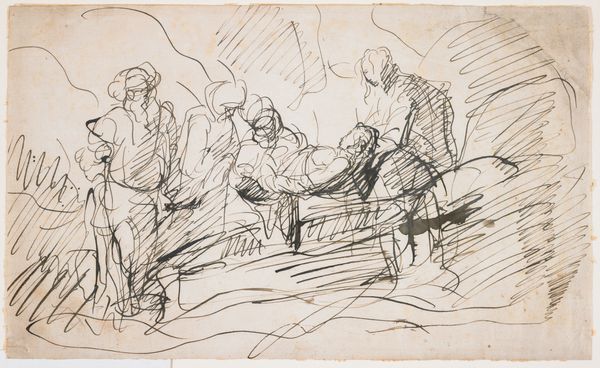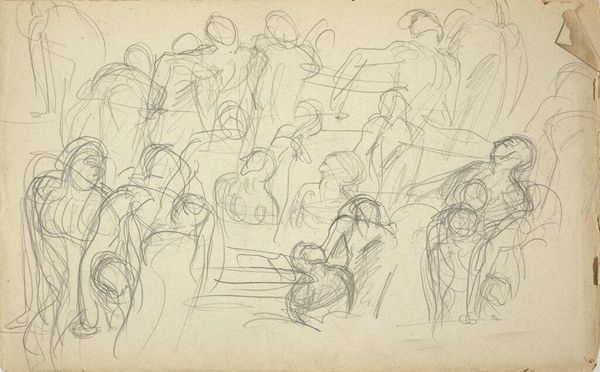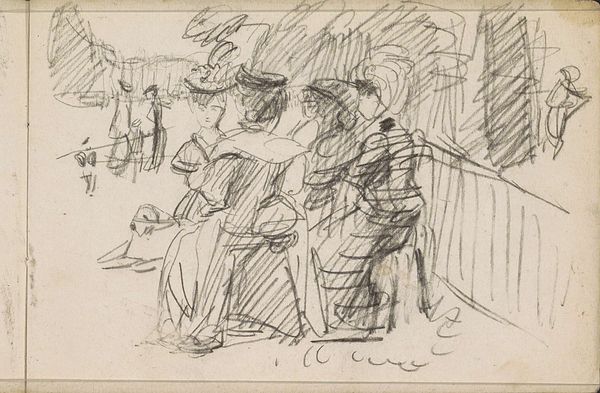
drawing, pencil, charcoal
#
drawing
#
impressionism
#
pen sketch
#
pencil sketch
#
landscape
#
figuration
#
personal sketchbook
#
idea generation sketch
#
sketchwork
#
ink drawing experimentation
#
pen-ink sketch
#
pencil
#
sketchbook drawing
#
charcoal
#
sketchbook art
#
initial sketch
Dimensions: height 192 mm, width 115 mm
Copyright: Rijks Museum: Open Domain
Curator: What a flurry of marks! I feel like I’m catching a glimpse of something fleeting. Editor: That's a fitting first impression. We are looking at "Voorstudie voor De Gele Rijders," or "Preliminary Study for the Yellow Riders," made around 1885 by George Hendrik Breitner. It’s a charcoal, pencil, and pen drawing currently housed in the Rijksmuseum. Considering the materials, this was very likely an exploratory work for the artist. Curator: The “Yellow Riders”… there's something quite symbolic in that title. Yellow often represents change, transition, or even betrayal in Western iconography. Seeing them as a group, almost faceless, suggests an inexorable force, perhaps of impending societal shifts? Editor: It's fascinating how you jump to symbolism, while I immediately focus on the “study” aspect. Look at the frantic quality of the lines! It speaks volumes about Breitner's process, his method of quickly capturing a scene, prioritizing movement and gesture over precise detail. You can see the energy he was trying to translate from reality onto paper. The means of production here gives access to the very genesis of an image. Curator: Precisely! It's that raw energy that allows the figures to almost transcend their immediate reality, embodying broader anxieties of the era. I see the riders less as specific people, and more as symbols representing larger societal pressures. Even the hasty application of charcoal seems imbued with a sense of urgency and impending doom. Consider, too, the blank sky above them. It hints at limitless possibility but also echoes a cultural emptiness. Editor: Cultural emptiness? I interpret that empty space more as a record of the artist making use of cheaper material. The visible page itself becomes a material element that disrupts any attempt at a polished illusion. We must not overlook that labor went into producing the paper and charcoal and pens that Breitner employed in his pursuit! This allows us to ask interesting questions around material conditions as essential ingredients for artmaking. Curator: Your emphasis on materials grounds the artwork in a particular reality, while I tend to perceive it through the lens of enduring archetypes and symbolic weight. It’s precisely that interplay between material fact and the power of symbolism that gives this image its enduring appeal. Editor: I'd agree—paying close attention to Breitner’s quick, decisive markings offers compelling insights into a specific moment and material practice—allowing us to grasp some sense of the process itself and opening possibilities for a more concrete art history.
Comments
No comments
Be the first to comment and join the conversation on the ultimate creative platform.
